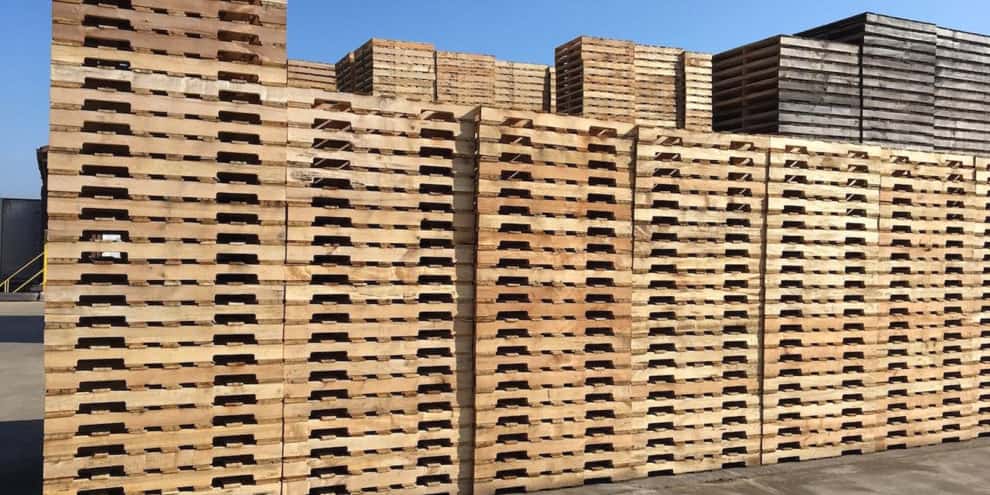Early in my wood procurement career, my friend and timber buyer Fred Voyles taught me that, as a forester buying logs for a mill, to really learn and have an impact, to improve a situation or reinforce an expectation, and to show you know what’s going on and demonstrate respect, you have to get out of the truck.
At Forisk, we spend a lot of time “out of the truck” in operations, collecting data, talking with people and testing ideas. This article introduces research and observations from spending months visiting dozens of wood-using mills and in-woods operations with one firm, PalletOne, to highlight challenges and approaches potentially relevant to the demand for wood and performance of timberland investments in local markets.
What is a Pallet?
Pallets solve problems in a world reliant on shipping containers to move consumer products and industrial supplies. Unlike crates or barrels, pallets provide a stable platform that plays nicely with forklifts, loaders and other machines that must move and stack heavy loads. Any stroll through a warehouse will find dozens and hundreds of pallets loaded with corrugated boxes coming from or headed to containers and semis.
Pallets, like those pictured above, are the wooden Lego pieces and “moving trays” used to transport the world’s consumables, from bricks to books to orange crates and cases of beer. In short, no pallets, no Super Bowl parties.
PalletOne and the U.S. Wood Pallet Sector
The wood pallet business is sandwiched in a niche. The niche absorbs low-grade hardwood logs and low-grade pine lumber to manufacture pallet stock and pallets for moving products around the world. On the hardwood side, pallets use the boards and logs not good enough to produce flooring or veneer or cabinets. On the pine side, pallets absorb the boards that fail to make the cut for the building and remodeling of homes, or appearance applications.
According to research from the National Wood Pallet and Container Association (NPWCA), U.S. pallet manufacturers produced 849 million wood pallets in 2016, or 14% more than five years earlier. The chart below summarizes the volumes of hardwood and softwood lumber required to manufacture these pallets. Softwood lumber accounts for more than half (55%) of wood pallet lumber raw materials, but pallets account for under 11% of U.S. softwood lumber use (and just over 15% of U.S. softwood lumber production). Alternately, wood pallets account for nearly 49% of hardwood lumber applications.
Lumber Used for Wood Pallets in the U.S. (2016, billions of board feet)

In the U.S., PalletOne is the largest new wood pallet manufacturer. The firm operates 16 locations in 9 states and manufactures new hardwood and softwood pallets, repairs and recycles used pallets and produces a range of other wood products. Across its operations, PalletOne employs over 1,500 people.
Over the past two years, we’ve had the chance to get out of the truck and visit two dozen PalletOne manufacturing and in-woods operations. Physical facts and new realities related to forest supplies, labor, and technology change the way PalletOne sees and navigates its business, and offers useful lessons for those of us thinking through forest industry strategy which we plan to share in future articles.
Photo by B. Mendell taken at PalletOne in Shipshewana, Indiana
This content may not be used or reproduced in any manner whatsoever, in part or in whole, without written permission of LANDTHINK. Use of this content without permission is a violation of federal copyright law. The articles, posts, comments, opinions and information provided by LANDTHINK are for informational and research purposes only and DOES NOT substitute or coincide with the advice of an attorney, accountant, real estate broker or any other licensed real estate professional. LANDTHINK strongly advises visitors and readers to seek their own professional guidance and advice related to buying, investing in or selling real estate.










Add Comment